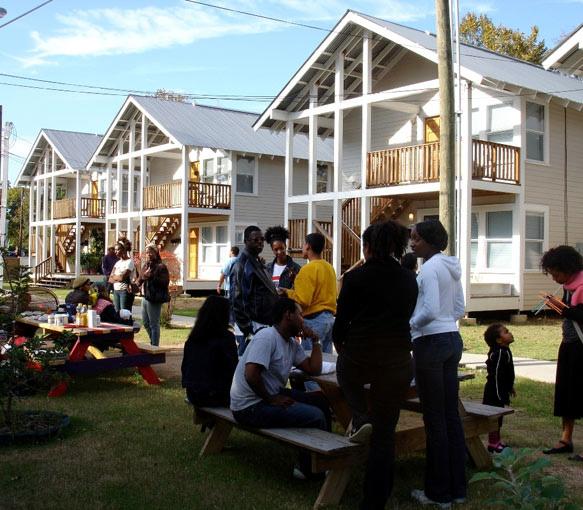













Guiding principle #1
Preserve and celebrate the history, culture, and character of the Third Ward in art, murals, landmark signage, and wayfinding with QR-codes that share stories, and streets named for significant Third Ward residents


Guiding principle #2
Create a distinct place that speaks to the Black community and says Third Ward, preserving the small scale with a maximum of 3-4 stories, front porches and courtyards, gabled roofs, and green spaces.

Guiding principle #3

Increase safety for all ages and businesses through design, lighting, and disaster resiliency planning, including safe play spaces for children.

Guiding principle #4
Foster a sense of community by organizing housing in clusters and weaving in seating/ gathering areas outdoors.

Guiding principle #5
Design with all residents in mind, using a range of housing types and amenities for people at different stages of their life (seniors, those with disabilities, in transition, youth, families, single parents) and maintain affordability.
Guiding principle #6

Integrate amenities that build skills, education, and wellness such a learning and rec center with programs and activities (tech lab, job training, portable library) for all ages as well as playgrounds, outdoor fitness, and community gardens.


Guiding principle #7
Limit displacement by maintaining permanent affordability, incentivizing resident return, and helping existing homeowners remain in their homes.


Guiding principle #8
Create safe access to stores and services nearby, particularly a co-op market, an incubator for entrepreneurs, community kitchen, entertainment, and job opportunities (including for youth).

Guiding principle #9
Link new housing to reliable Metro routes and encourage other forms of transportation (bike lanes and racks, bus shelters, scooters).

Guiding principle #10

Incorporate energy efficiency and green infrastructure into the design including solar energy, green roofs, rain gardens, solar shading.


